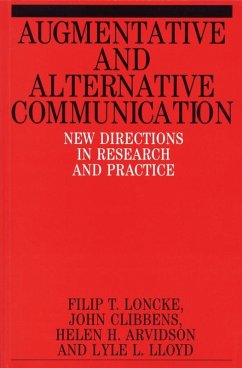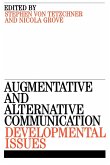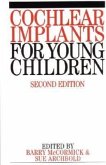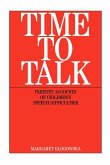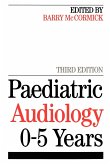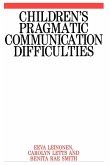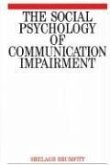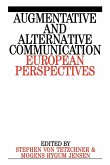Filip Loncke, John Clibbens, Helen Arvidson, Lyle Lord
Augmentative and Alternative Communication
New Directions in Research and Practice
Filip Loncke, John Clibbens, Helen Arvidson, Lyle Lord
Augmentative and Alternative Communication
New Directions in Research and Practice
- Broschiertes Buch
- Merkliste
- Auf die Merkliste
- Bewerten Bewerten
- Teilen
- Produkt teilen
- Produkterinnerung
- Produkterinnerung
With contributions from leaders in their fields from across the world, this book focuses on current AAC research and examines ways in which it contributes to a better general understanding of processes related to its use and implementation. The book is divided into six sections with many topics, including gestural and manual communication, being discussed in more than one section.
Andere Kunden interessierten sich auch für
![Augmentative and Alternative Communication Augmentative and Alternative Communication]() Stephen Von TetzchnerAugmentative and Alternative Communication121,99 €
Stephen Von TetzchnerAugmentative and Alternative Communication121,99 €![Cochlear Implants for Young Children Cochlear Implants for Young Children]() Barry MccormickCochlear Implants for Young Children160,99 €
Barry MccormickCochlear Implants for Young Children160,99 €![Time to Talk Time to Talk]() Margaret GlogowskaTime to Talk65,99 €
Margaret GlogowskaTime to Talk65,99 €![Paediatric Audiology 0 - 5 Years Paediatric Audiology 0 - 5 Years]() Barry McCormickPaediatric Audiology 0 - 5 Years165,99 €
Barry McCormickPaediatric Audiology 0 - 5 Years165,99 €![Children s Pragmatic Communication Children s Pragmatic Communication]() Eeva LeinonenChildren s Pragmatic Communication90,99 €
Eeva LeinonenChildren s Pragmatic Communication90,99 €![The Social Psychology of Communication Impairments The Social Psychology of Communication Impairments]() Shelagh BrumfittThe Social Psychology of Communication Impairments85,99 €
Shelagh BrumfittThe Social Psychology of Communication Impairments85,99 €![Augumentative and Alternative Communication Augumentative and Alternative Communication]() Stephen Von TetzchnerAugumentative and Alternative Communication121,99 €
Stephen Von TetzchnerAugumentative and Alternative Communication121,99 €-
-
-
With contributions from leaders in their fields from across the world, this book focuses on current AAC research and examines ways in which it contributes to a better general understanding of processes related to its use and implementation. The book is divided into six sections with many topics, including gestural and manual communication, being discussed in more than one section.
Hinweis: Dieser Artikel kann nur an eine deutsche Lieferadresse ausgeliefert werden.
Hinweis: Dieser Artikel kann nur an eine deutsche Lieferadresse ausgeliefert werden.
Produktdetails
- Produktdetails
- Verlag: Wiley
- Seitenzahl: 366
- Erscheinungstermin: 8. Oktober 1999
- Englisch
- Abmessung: 232mm x 155mm x 24mm
- Gewicht: 608g
- ISBN-13: 9781861561435
- ISBN-10: 1861561431
- Artikelnr.: 21366405
- Herstellerkennzeichnung
- Libri GmbH
- Europaallee 1
- 36244 Bad Hersfeld
- gpsr@libri.de
- Verlag: Wiley
- Seitenzahl: 366
- Erscheinungstermin: 8. Oktober 1999
- Englisch
- Abmessung: 232mm x 155mm x 24mm
- Gewicht: 608g
- ISBN-13: 9781861561435
- ISBN-10: 1861561431
- Artikelnr.: 21366405
- Herstellerkennzeichnung
- Libri GmbH
- Europaallee 1
- 36244 Bad Hersfeld
- gpsr@libri.de
Filip T. Loncke, Center for International Cooperation Fracaritatis, Belgium. John Clibbens, University of Plymouth, UK. Helen H. Arvedson, Purdue University, USA. Lyle Lloyd, Purdue University, USA.
Section 1. Language Development.
Chapter 1. Introduction to Language development.
Chapter 2. The Bimodal Situation of Children Learning Using Manual and
Graphic Sign.
Chapter 3. Form and Meaning in Alternative Language development.
Chapter 4. Understanding The Impact of Graphic Sign Use on The message
Structure Characteristics of Individuals With Severe Speech impairments.
Chapter 5. Linking Language Learning Experiences and Grammatical
acquisition.
Chapter 6. Reflections on The Development of Alternative Language forms.
Section 2. Natural Language Processing.
Chapter 7. Language Processing techniques and Resources for Communication
Aids. An Overview of Previous research.
Chapter 8. Modelling Pragmatics in Aac.
Chapter 9. Considerations on the Automatic Evaluation of Word Prediction
Systems.
Chapter 10. The Role of evaluation in Bringing NLP to Aac, A Case to
Consider.
Chapter 11. Evaluation of NLP Technology for AAC Using Logged Data.
Chapter 12. Grammar and Lexicons for a Speech-interfaced Knowledge-based
Engineering Program.
Chapter 13. scriptlog. A Tool for Logging The Writing Process and its
Possible Diagnostic use.
Chapter 14. Some Future Research Directions.
Section 3. Graphic Symbol use.
Chapter 15. Considerations for Understanding The Nature and Use of Graphic
symbols.
Chapter 16. Graphic Symbol Use, An Orientation Toward Theoretical
relevance.
Chapter 17. Graphic Symbols, Clinical Issues.
Chapter 18. Graphic symbols and Information Processing.
Chapter 19. Research Issues and Graphic symbol Use.
Section 4. Outcomes and Measurements in Aac.
Chapter 20. Outcomes measurement in Aac.
Section 5. Family Issues and Aac.
Chapter 21. Moving forward With Families, Persepectives in AAC Research and
Practice.
Section 6. Consumer Issues and Aac.
Chapter 22. An Introduction to Consumer Perspectives in AAC Research,
Approaches, Techniques and Their Theoretical Underpinnings.
Chapter 23. Challenging Oppression, Augmented Communicators' Involvement in
AAC research.
Chapter 24. Nothing About Me, A Proposal for Participatory Action research
in Aac.
Chapter 25. Examining The Perspectives of Families, Issues related to
Conducting Cross-cultural Research.
Chapter 1. Introduction to Language development.
Chapter 2. The Bimodal Situation of Children Learning Using Manual and
Graphic Sign.
Chapter 3. Form and Meaning in Alternative Language development.
Chapter 4. Understanding The Impact of Graphic Sign Use on The message
Structure Characteristics of Individuals With Severe Speech impairments.
Chapter 5. Linking Language Learning Experiences and Grammatical
acquisition.
Chapter 6. Reflections on The Development of Alternative Language forms.
Section 2. Natural Language Processing.
Chapter 7. Language Processing techniques and Resources for Communication
Aids. An Overview of Previous research.
Chapter 8. Modelling Pragmatics in Aac.
Chapter 9. Considerations on the Automatic Evaluation of Word Prediction
Systems.
Chapter 10. The Role of evaluation in Bringing NLP to Aac, A Case to
Consider.
Chapter 11. Evaluation of NLP Technology for AAC Using Logged Data.
Chapter 12. Grammar and Lexicons for a Speech-interfaced Knowledge-based
Engineering Program.
Chapter 13. scriptlog. A Tool for Logging The Writing Process and its
Possible Diagnostic use.
Chapter 14. Some Future Research Directions.
Section 3. Graphic Symbol use.
Chapter 15. Considerations for Understanding The Nature and Use of Graphic
symbols.
Chapter 16. Graphic Symbol Use, An Orientation Toward Theoretical
relevance.
Chapter 17. Graphic Symbols, Clinical Issues.
Chapter 18. Graphic symbols and Information Processing.
Chapter 19. Research Issues and Graphic symbol Use.
Section 4. Outcomes and Measurements in Aac.
Chapter 20. Outcomes measurement in Aac.
Section 5. Family Issues and Aac.
Chapter 21. Moving forward With Families, Persepectives in AAC Research and
Practice.
Section 6. Consumer Issues and Aac.
Chapter 22. An Introduction to Consumer Perspectives in AAC Research,
Approaches, Techniques and Their Theoretical Underpinnings.
Chapter 23. Challenging Oppression, Augmented Communicators' Involvement in
AAC research.
Chapter 24. Nothing About Me, A Proposal for Participatory Action research
in Aac.
Chapter 25. Examining The Perspectives of Families, Issues related to
Conducting Cross-cultural Research.
Section 1. Language Development.
Chapter 1. Introduction to Language development.
Chapter 2. The Bimodal Situation of Children Learning Using Manual and
Graphic Sign.
Chapter 3. Form and Meaning in Alternative Language development.
Chapter 4. Understanding The Impact of Graphic Sign Use on The message
Structure Characteristics of Individuals With Severe Speech impairments.
Chapter 5. Linking Language Learning Experiences and Grammatical
acquisition.
Chapter 6. Reflections on The Development of Alternative Language forms.
Section 2. Natural Language Processing.
Chapter 7. Language Processing techniques and Resources for Communication
Aids. An Overview of Previous research.
Chapter 8. Modelling Pragmatics in Aac.
Chapter 9. Considerations on the Automatic Evaluation of Word Prediction
Systems.
Chapter 10. The Role of evaluation in Bringing NLP to Aac, A Case to
Consider.
Chapter 11. Evaluation of NLP Technology for AAC Using Logged Data.
Chapter 12. Grammar and Lexicons for a Speech-interfaced Knowledge-based
Engineering Program.
Chapter 13. scriptlog. A Tool for Logging The Writing Process and its
Possible Diagnostic use.
Chapter 14. Some Future Research Directions.
Section 3. Graphic Symbol use.
Chapter 15. Considerations for Understanding The Nature and Use of Graphic
symbols.
Chapter 16. Graphic Symbol Use, An Orientation Toward Theoretical
relevance.
Chapter 17. Graphic Symbols, Clinical Issues.
Chapter 18. Graphic symbols and Information Processing.
Chapter 19. Research Issues and Graphic symbol Use.
Section 4. Outcomes and Measurements in Aac.
Chapter 20. Outcomes measurement in Aac.
Section 5. Family Issues and Aac.
Chapter 21. Moving forward With Families, Persepectives in AAC Research and
Practice.
Section 6. Consumer Issues and Aac.
Chapter 22. An Introduction to Consumer Perspectives in AAC Research,
Approaches, Techniques and Their Theoretical Underpinnings.
Chapter 23. Challenging Oppression, Augmented Communicators' Involvement in
AAC research.
Chapter 24. Nothing About Me, A Proposal for Participatory Action research
in Aac.
Chapter 25. Examining The Perspectives of Families, Issues related to
Conducting Cross-cultural Research.
Chapter 1. Introduction to Language development.
Chapter 2. The Bimodal Situation of Children Learning Using Manual and
Graphic Sign.
Chapter 3. Form and Meaning in Alternative Language development.
Chapter 4. Understanding The Impact of Graphic Sign Use on The message
Structure Characteristics of Individuals With Severe Speech impairments.
Chapter 5. Linking Language Learning Experiences and Grammatical
acquisition.
Chapter 6. Reflections on The Development of Alternative Language forms.
Section 2. Natural Language Processing.
Chapter 7. Language Processing techniques and Resources for Communication
Aids. An Overview of Previous research.
Chapter 8. Modelling Pragmatics in Aac.
Chapter 9. Considerations on the Automatic Evaluation of Word Prediction
Systems.
Chapter 10. The Role of evaluation in Bringing NLP to Aac, A Case to
Consider.
Chapter 11. Evaluation of NLP Technology for AAC Using Logged Data.
Chapter 12. Grammar and Lexicons for a Speech-interfaced Knowledge-based
Engineering Program.
Chapter 13. scriptlog. A Tool for Logging The Writing Process and its
Possible Diagnostic use.
Chapter 14. Some Future Research Directions.
Section 3. Graphic Symbol use.
Chapter 15. Considerations for Understanding The Nature and Use of Graphic
symbols.
Chapter 16. Graphic Symbol Use, An Orientation Toward Theoretical
relevance.
Chapter 17. Graphic Symbols, Clinical Issues.
Chapter 18. Graphic symbols and Information Processing.
Chapter 19. Research Issues and Graphic symbol Use.
Section 4. Outcomes and Measurements in Aac.
Chapter 20. Outcomes measurement in Aac.
Section 5. Family Issues and Aac.
Chapter 21. Moving forward With Families, Persepectives in AAC Research and
Practice.
Section 6. Consumer Issues and Aac.
Chapter 22. An Introduction to Consumer Perspectives in AAC Research,
Approaches, Techniques and Their Theoretical Underpinnings.
Chapter 23. Challenging Oppression, Augmented Communicators' Involvement in
AAC research.
Chapter 24. Nothing About Me, A Proposal for Participatory Action research
in Aac.
Chapter 25. Examining The Perspectives of Families, Issues related to
Conducting Cross-cultural Research.

